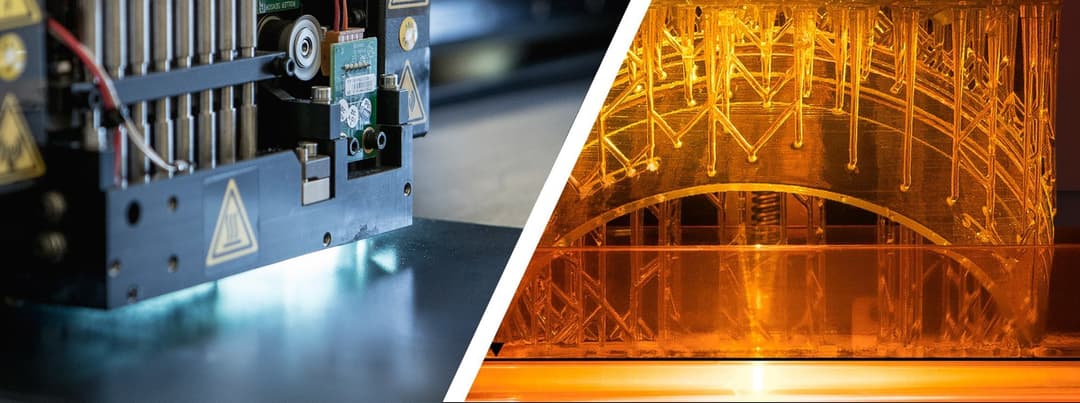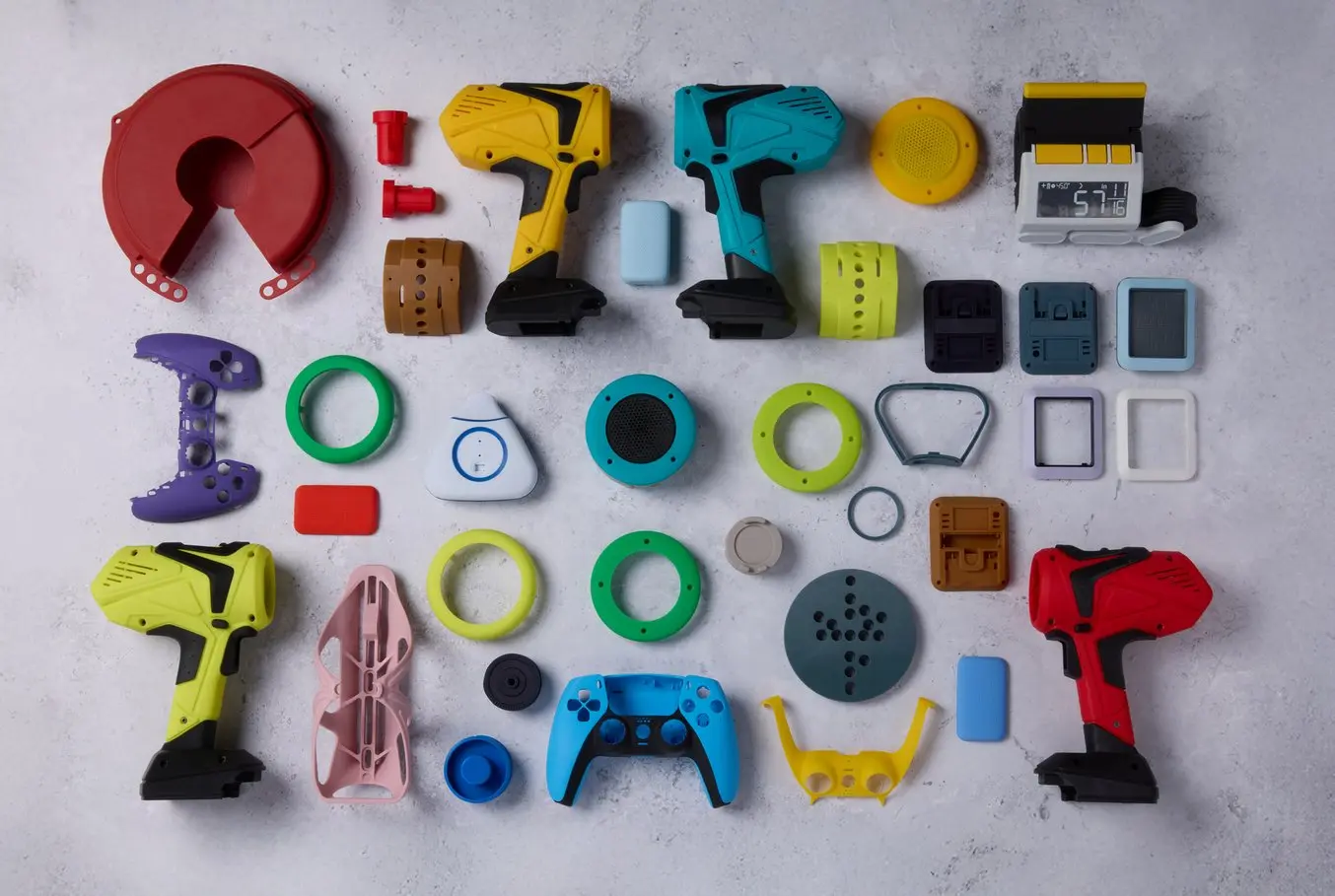
Are you looking to 3D print parts in color or to create vibrant, multicolor 3D printed parts? Over the last few years, multiple new methods have emerged to 3D print in color, and newer 3D printers have become more accessible, empowering any engineer, designer, model maker, or hobbyist to create objects in a range of hues.
In this guide, we dive into several techniques you can use to produce colored 3D printed parts, as well as the technologies and applications of color 3D printing.
Options for Color 3D Printing
There are several options to produce colored 3D printed parts, from color mixing to color matching, full color 3D printing, painting 3D printed parts, and hydrographics.
Direct Color and Color Mixing 3D Printing
Direct color, also known as multicolor 3D printing is the most basic way to 3D print parts in multiple colors. It involves loading colored raw material into the printer. The most common way is using colored filaments with 3D printers that use fused deposition modeling (FDM) technology, which melts and deposits the filament onto the printer bed.
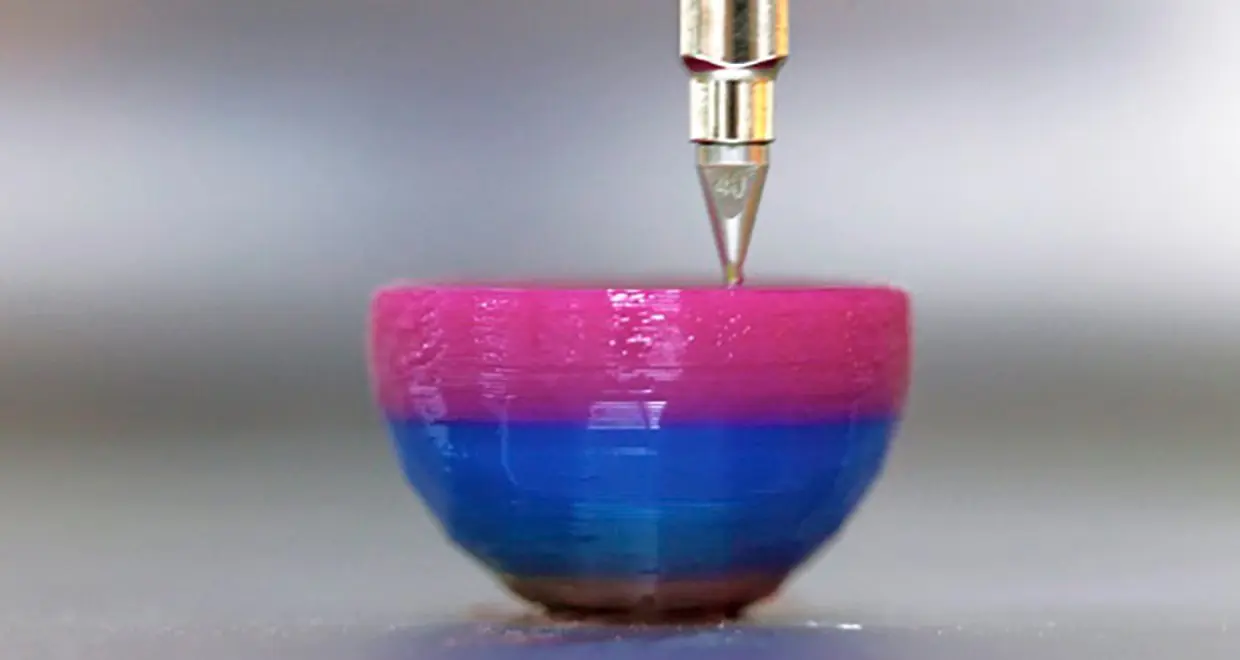
FDM 3D printing in color. (source: 3Dnatives)
FDM 3D printers can print in a single color using colored filament, in two colors using a dual extruder, or in multiple colors and gradients using color mixing, depending on how many filaments feed through the printer simultaneously.
The main advantage of these multicolor 3D printers is that they're easy to use and affordable. However, disadvantages include the inability to achieve a specific color tone and visible layer lines on the final part. Also, the more extruders an FDM printer has, the bigger the chance of print errors. Plus, FDM 3D printers produce waste or “printer poop” during tuning, which cannot be eliminated.
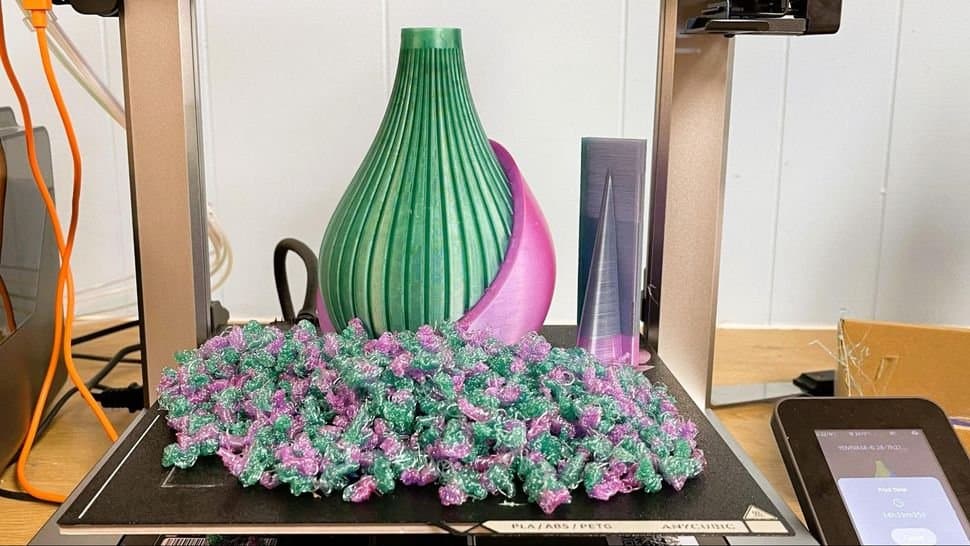
This 3D printed vase has 195 g of waste material compared to 185 g of material used for the vase. (Image credit: Tom's Hardware)
Color Matching 3D Printing
While direct color 3D printing only offers off-the-shelf color options, color matching allows you to create 3D printed parts in almost any custom color.

Parts printed using Form 4 and Color Resin in custom colors.
With Formlabs stereolithography (SLA) 3D printers, Color Resin offers the possibility to print customized colors manufactured to order. SLA 3D printing solidifies each layer of resin, resulting in 3D printed parts with smooth surface finishes and almost imperceptible layer lines in colors spanning nuanced neutrals to saturated, bold colors.
Color Resin V5 is currently only available in the USA, with expansion to other regions coming in the near future.
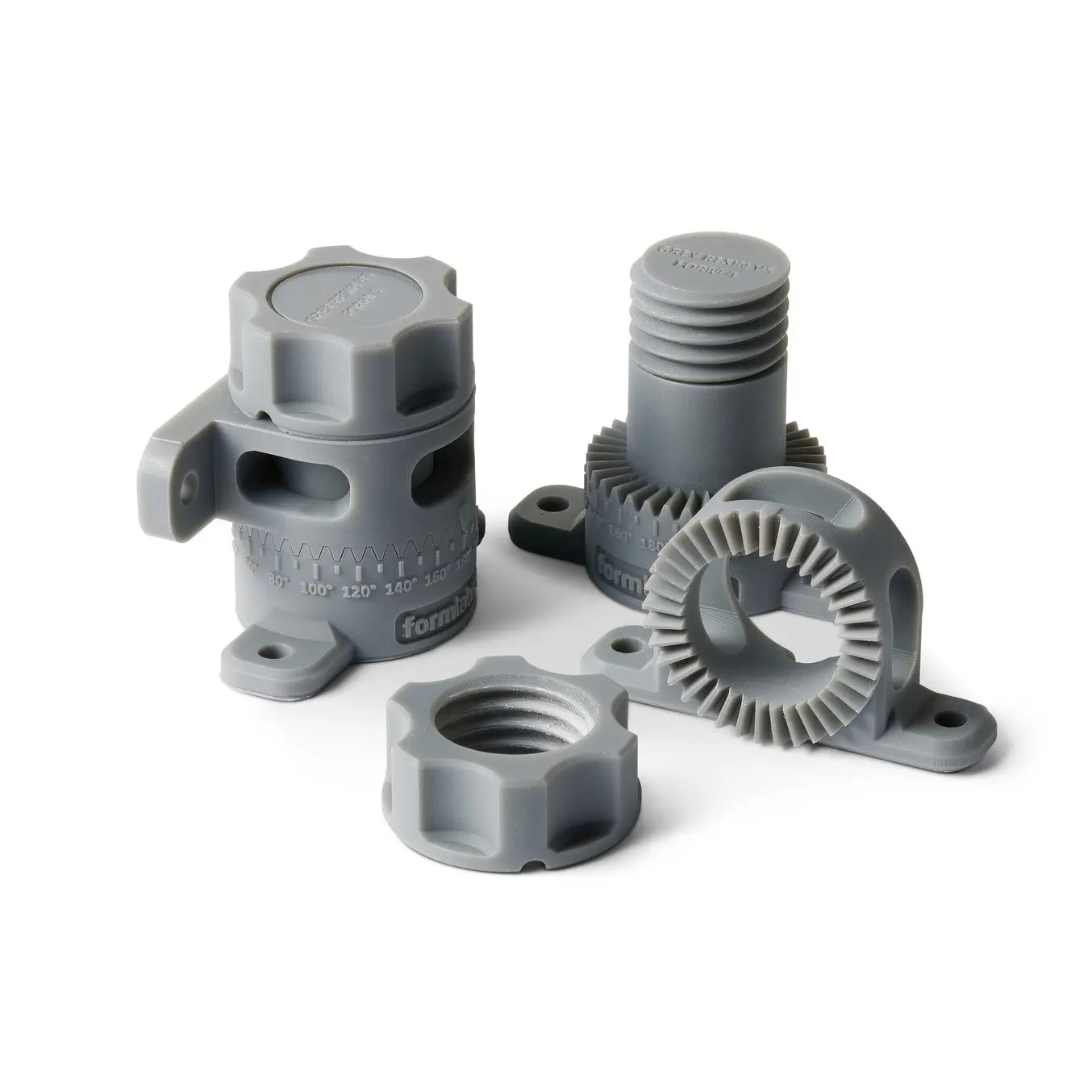
Request a Free Sample Part
See and feel Formlabs quality firsthand. We’ll ship a free sample part to your office.
Full Color 3D Printing
Full-color 3D printing is the most versatile color 3D printing method, as it produces objects in multiple colors at the same time, matching any tone and making realistic parts.
Unlike colored filaments or resin, the material used in full color printing is not pre-colored—the color is added to the base material during the printing process, similar to a color 2D printer.
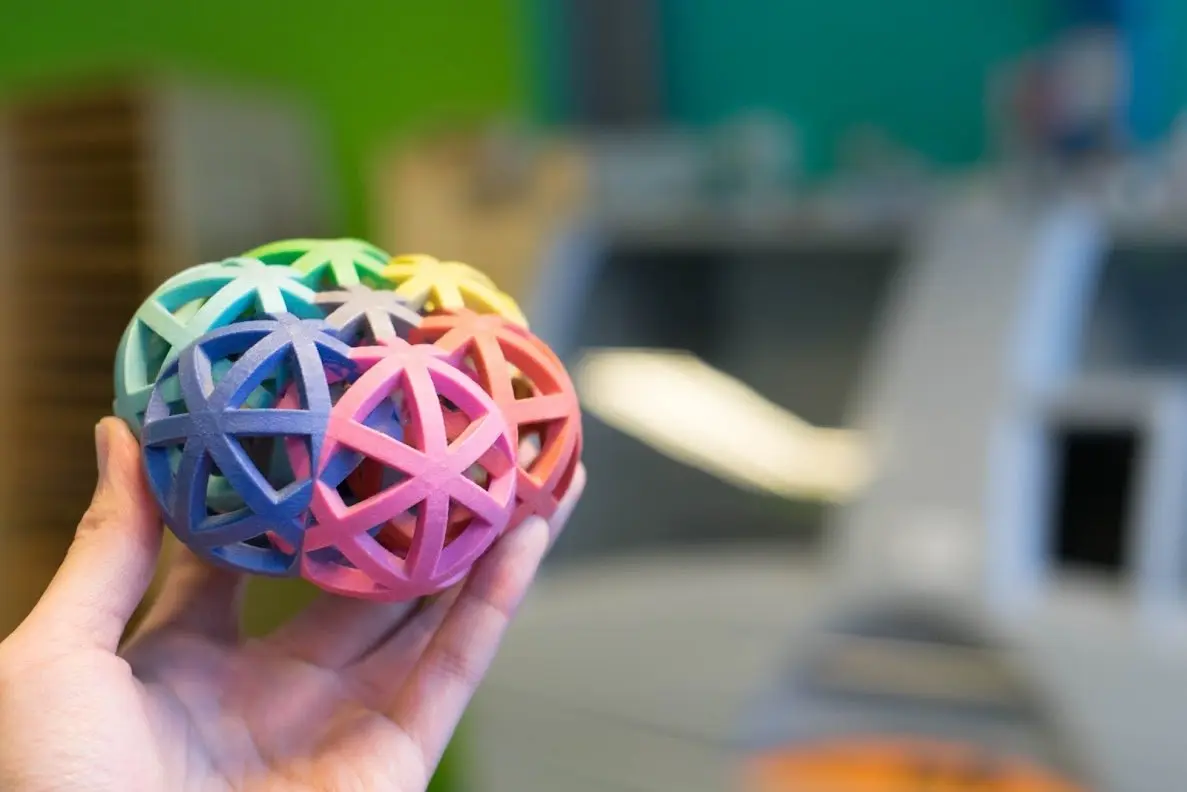
Full-colored 3D printed part with binder jetting. (source: Hubs)
Technologies such as binder jetting and material jetting are able to produce full-color 3D prints. However, these processes have a high entry price, making them inaccessible to most users, while only one manufacturer offers a more affordable full color FDM 3D printer.
Painting 3D Printed Parts
In certain cases, colored 3D prints may lack the detail or the vivid colors that an artist or designer aims for. Painting monochromatic 3D printed parts with acrylic, oil, or spray paint, while more time-consuming, offers an inexpensive and fully custom solution.
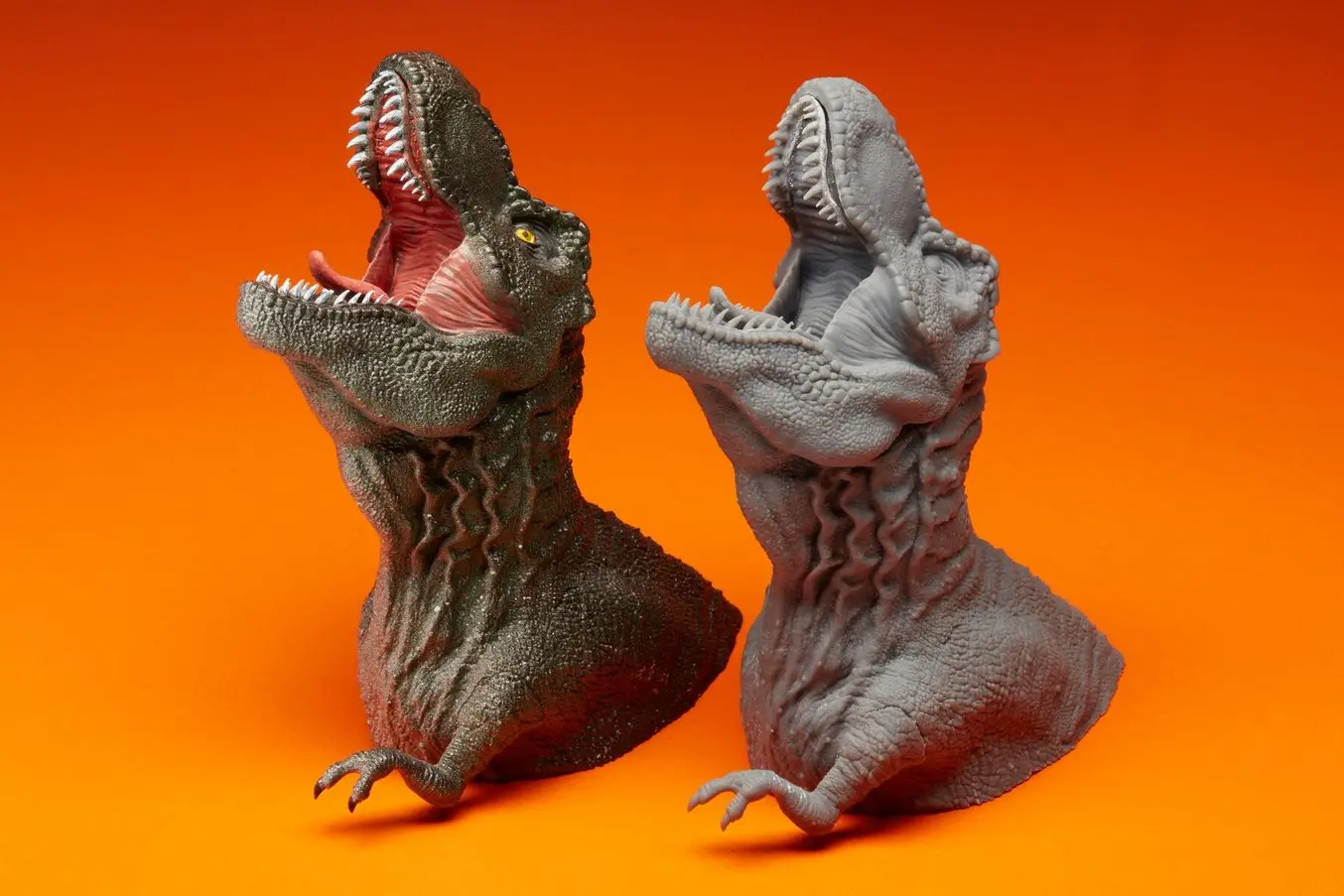
Side by side comparison on the before and after painting a dinosaur 3D printed SLA miniature.
Models that need a perfectly smooth finish or very fine features may require post-processing techniques, such as sanding, priming, or using a solvent prior to painting.
Sanding reduces imperfections in the surface, and primer fills in small cracks and holes. Additionally, some 3D printed parts may need an undercoat to diminish the neutral color of the primer before the paint application.
Watch or read our step-by-step guide on priming and painting 3D printed parts.
Hydrographics for 3D Printed Parts
Hydrographics, also known as hydroprinting, water printing, or water transfer printing, is a common method for applying printed designs to three-dimensional surfaces. The process uses an inkjet printer to print an image on a polyvinyl alcohol film. The film gets submerged in water and receives an activator chemical spray. The color film then stretches over and adheres to the object as it’s slowly dipped through the floating film.
If you're interested in this process, read our guide about full color patterns to 3D prints with computational hydrographics.
Color 3D Printing Processes
The most used technologies in color printing are fused deposition modeling (FDM), stereolithography (SLA), selective laser sintering (SLS), multi jet fusion (MJF), binder jetting, and material jetting. Let’s look at the pros and cons of each process.
FDM
FDM, or fused deposition modeling, is one of the most common and least expensive technologies in consumer 3D printing. FDM 3D printers build parts by melting and extruding thermoplastic filament, which a printer nozzle deposits layer by layer in the build area.

Filaments for FDM printing in various colors. (source: All3DP.com)
FDM is mostly used for direct color printing with single-extruder printers, or for multicolor 3D printing with dual-extruder printers.
The first full-color FDM 3D printer was the da Vinci Color 3D printer with a colorless filament dyed using CMYK inkjet cartridges right before being extruded, to produce colored parts in a similar way to a color 2D printer.
SLA
SLA, or stereolithography 3D printing, uses a laser to cure liquid resin into hardened plastic in a process called photopolymerization. SLA parts have the highest resolution and accuracy, the clearest details, and the smoothest surface finish of all plastic 3D printing technologies.
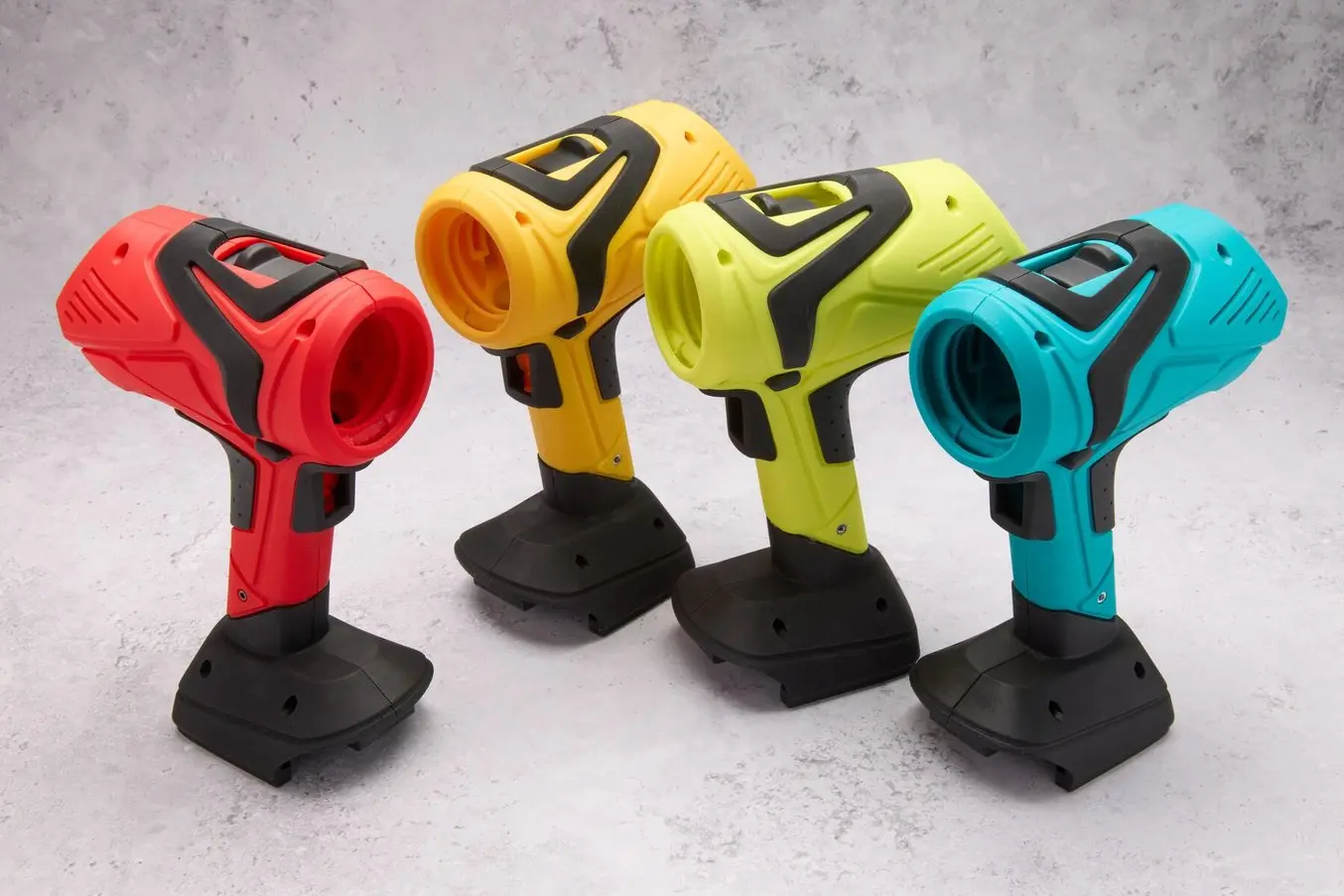
Color SLA parts 3D printed with Color Resin V5 on Form 4.
SLA offers the possibility for color matching almost any custom color using Color Resin , the first customized color solution for SLA 3D printing. Thanks to their smooth surface finish, SLA printed parts can also easily be post-processed, painted, and used for applying hydrographics.
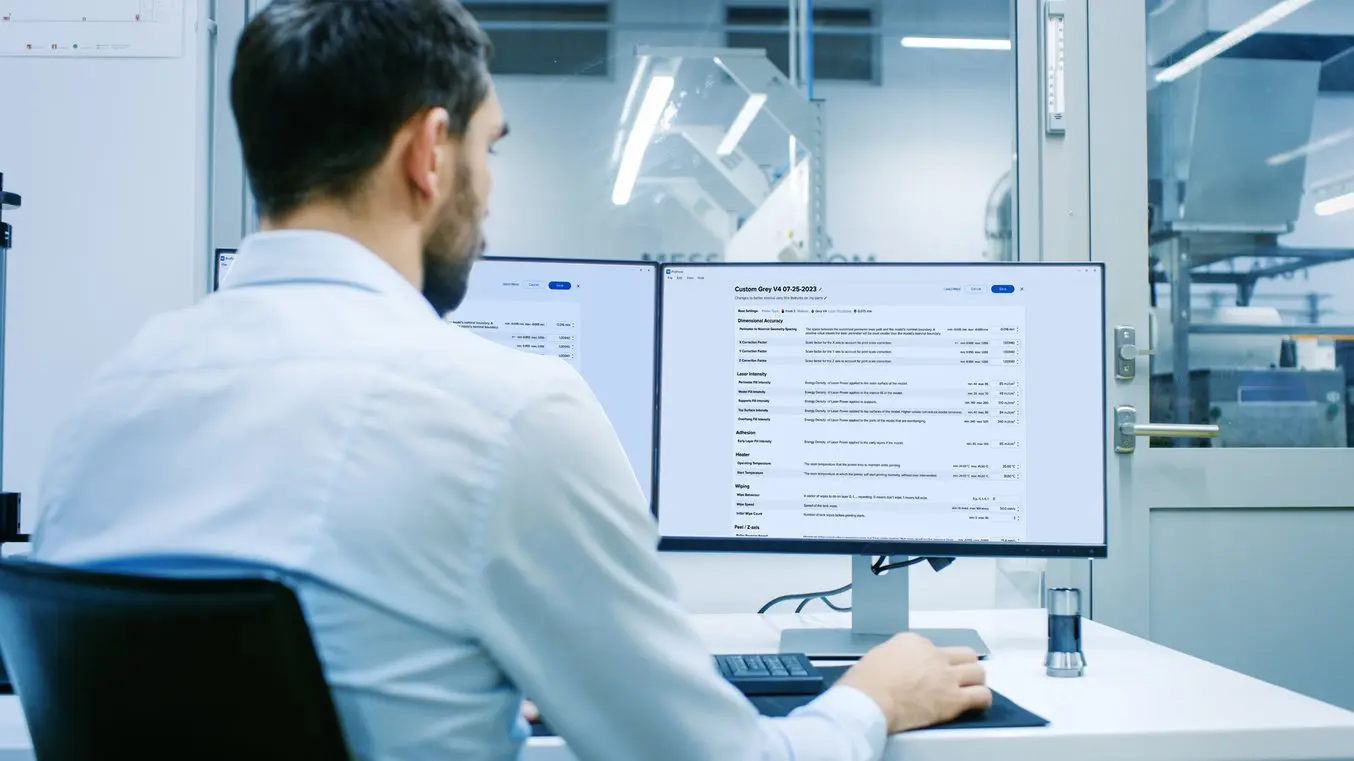
Talk to Our Sales Team
Whether you need to prototype at speed, or are producing end-use parts, we’re here to help. The Formlabs Sales team is composed of dedicated specialists who know exactly how to support you and your company's needs.
SLS
Selective laser sintering (SLS) is the most common additive manufacturing technology for industrial applications, trusted by engineers and manufacturers across different industries for its ability to produce strong, functional parts.
SLS 3D printers use white, grey, or black nylon powder as a raw material. While the parts cannot be directly printed in color, they can be dyed or painted in post-processing. There are four dyeing methods, each with distinct advantages and disadvantages depending on workflow and budget.
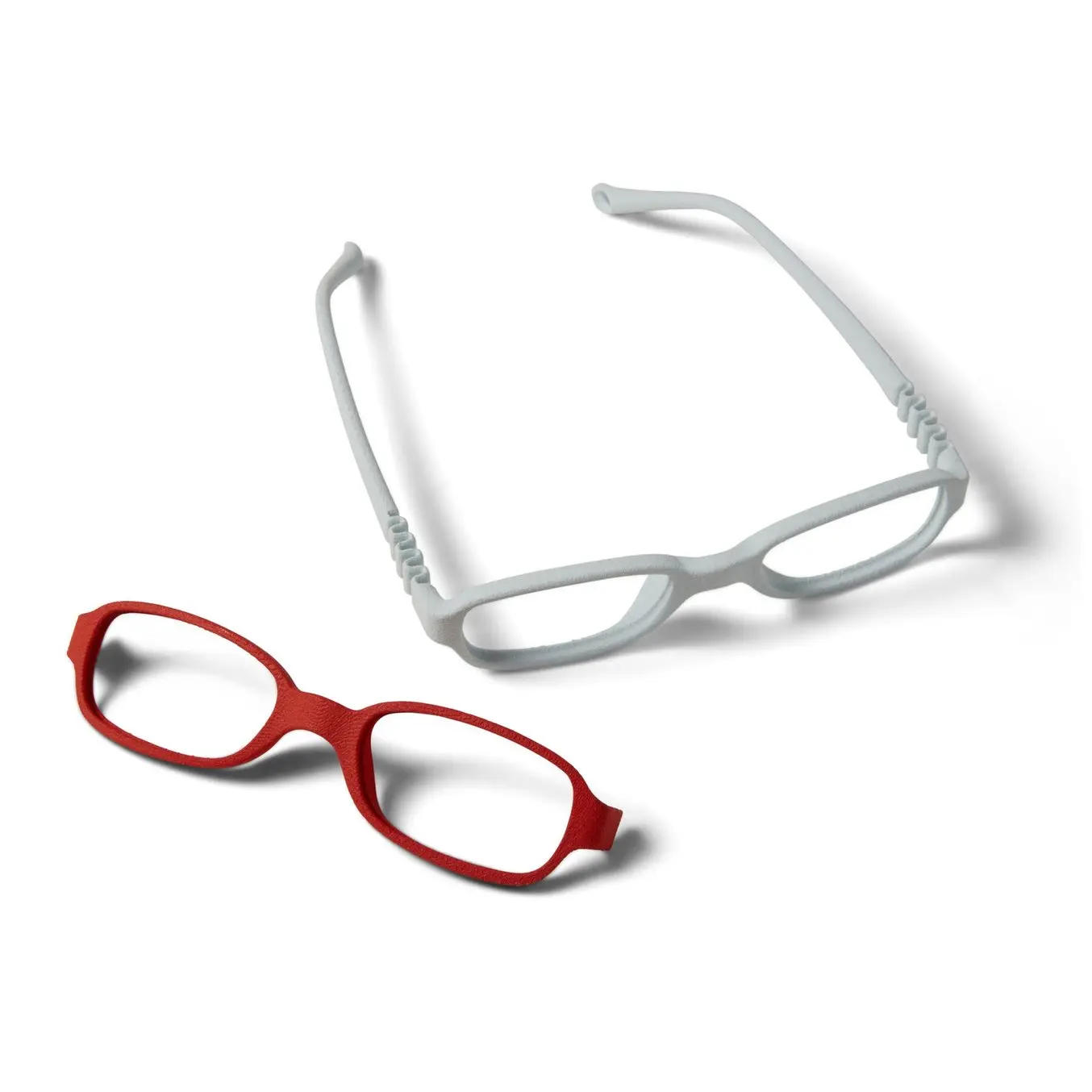
Dyeing SLS 3D Printed Parts: Benefits and Workflow
In this white paper, we will review the considerations, advantages and disadvantages, and available methods for dyeing SLS parts. We will also provide a step-by-step workflow, including preparation techniques and post-dye finishing options.
Binder Jetting
The binder jetting 3D printing technology is similar to SLS and MJF printing but uses a colored binding agent to bond powdered sandstone material instead of heat.
Parts produced with binder jetting have a porous surface and are very brittle, which means that this process is recommended only for static applications, such as creating full-color figurines and concept models.

Figurines printed with binder jetting. (source: Shapeways)
Material Jetting
Material jetting and PolyJet 3D printers combine traditional inkjet printing with the use of photopolymer resins, by depositing droplets of the material on a build tray similar to 2D printers, which then gets hardened by UV light.
These processes offer a myriad of color possibilities and can create photorealistic parts with vibrant colors. However, the parts have poor mechanical properties, are heat-sensitive, and the entry price for this technology is the highest of all color 3D printing options.
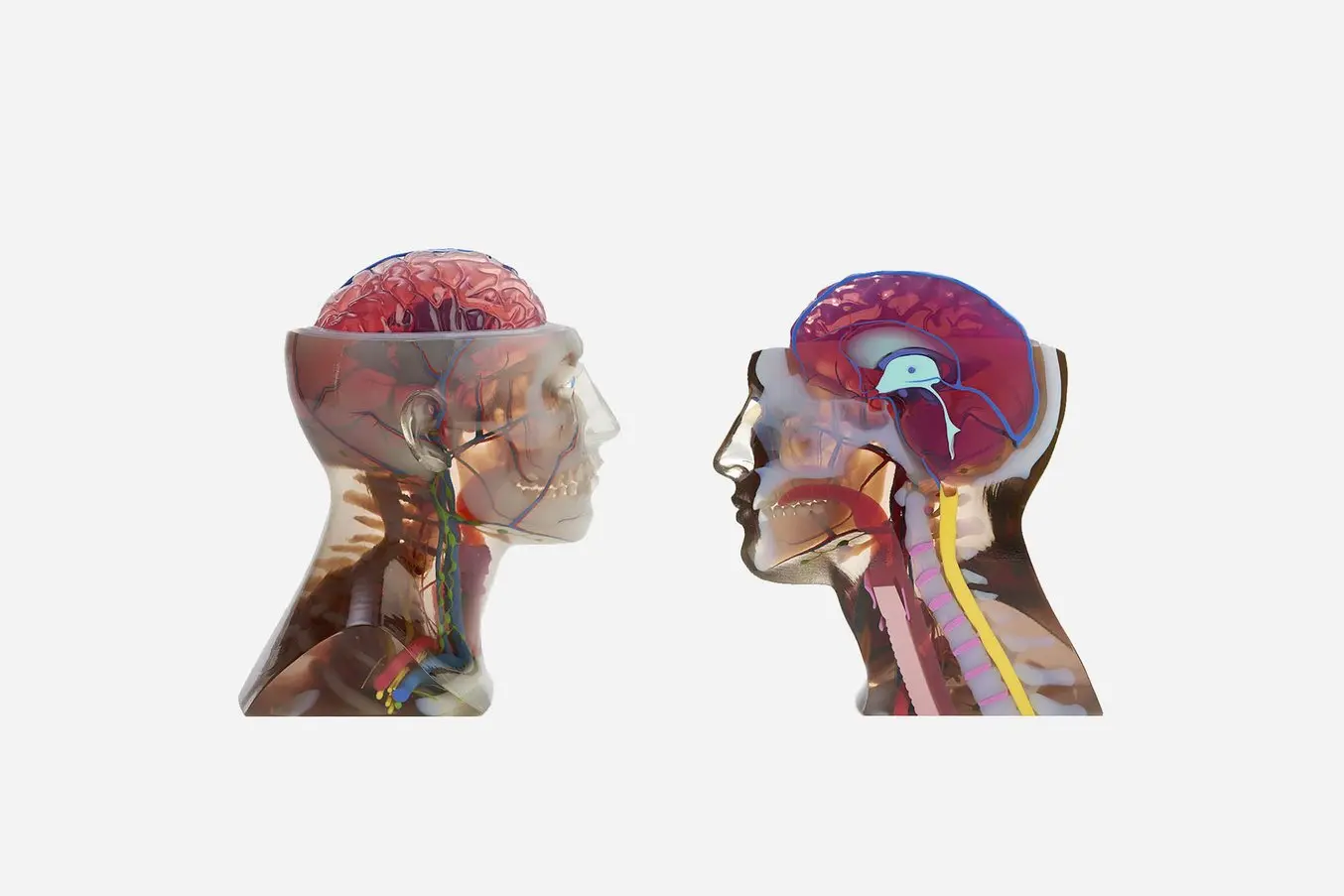
Color 3D printing with material jetting. (source: Hubs)
Color 3D Printing Processes Comparison
| FDM | SLA | SLS | Binder Jetting | Material Jetting | |
|---|---|---|---|---|---|
| Resolution | ★★☆☆☆ | ★★★★★ | ★★★★☆ | ★★★☆☆ | ★★★★★ |
| Accuracy | ★★★★☆ | ★★★★★ | ★★★★★ | ★★★☆☆ | ★★★★★ |
| Surface Finish | ★★☆☆☆ | ★★★★★ | ★★★★☆ | ★★★☆☆ | ★★★★★ |
| Ease of Use | ★★★★★ | ★★★★★ | ★★★★☆ | ★★★★☆ | ★★★★☆ |
| Complex Designs | ★★★☆☆ | ★★★★☆ | ★★★★★ | ★★★☆☆ | ★★★★☆ |
| Description | The print head melts and extrudes thermoplastic filament | A light source solidifies liquid resin | A laser or light source sinters nylon powder | A binding agent bonds sandstone powder | An inkjet-like print head cures droplets of resin |
| Materials | Thermoplastic filaments | Varieties of liquid resin | Varieties of polymer powder | Sandstone | Varieties of liquid resin |
| Color 3D printing options | Direct color, color mixing, or full color | Color matching | None | Full color | Full color |
| Post-processing with colors | Painting (requires a lot of post-processing) Hydrographic printing | Painting Hydrographic printing | Dyeing Painting Hydrographic printing | Painting Hydrographic printing | Painting Hydrographic printing |
| Applications | Basic modelmaking | Rapid prototyping, end-use parts, miniatures and models, medical models | Rapid prototyping, end-use parts | Miniatures and models | Rapid prototyping, miniatures and models, medical models |
| Price | Budget FDM printers and 3D printer kits start at around $200. Professional desktop FDM printers range from $2,000 to $8,000, and industrial systems are available from $15,000. | Low-cost resin 3D printers are available for $200 to $1000, professional SLA 3D printers are in the $2,500 to $10,000 range, and large-format resin 3D printers are in the $5,000 to $25,000 range. | Benchtop industrial SLS 3D printers start just under $30,000 for the printer and $60,000 for the entire ecosystem, including powder management and cleaning stations. Traditional industrial SLS printers start at around $200,000. | Full color 3D printers start around $60,000. | Full color 3D printers start around $50,000 and large-scale machines are available from $100,000. |
Applications for Color 3D Printing
Color 3D printing empowers engineers and designers to save money and time with looks-like prototypes and even end-use parts; movie makers to turn digital models into props; model makers to create vibrant miniatures; medical professionals to produce accurate anatomical models, and more.
Prototyping
Rapid prototyping helps companies turn ideas into realistic proofs of concept, advances these concepts to high-fidelity prototypes that look and work like final products, and guides products through a series of validation stages toward mass production.

The development team at birdkids used SLA 3D printing to create prototypes in color.
Concept models in color can demonstrate an idea to stakeholders, create discussion, and drive acceptance or rejection using low-risk concept explorations.
At later stages, realistic looks-like prototypes in color can give a better idea of what an end product will look like and how the end-user will interact with it. Ergonomics, user interfaces, and overall user experience can be validated with 3D printed looks-like prototypes before spending significant design and engineering time to fully build out product features.
Color matching 3D printing or full color 3D printing also allows product development teams to experiment with different color options and run studies with customers before moving into production.
Entertainment
In the entertainment industry, 3D printed props and models are blurring the line between physical models and digital effects. Artists create realistic, detailed models using 3D modeling software and then bring them to life in a matter of hours using 3D printing. High-resolution 3D printing processes, like SLA, can reproduce even the most complex parameters of a design, such as skin texture.
Props masters, such as Russell Bobbitt for Marvel movies and Jaco Snyman for the Raised by Wolves series, as well as visual effects (VFX) and design studio Aaron Sims Creative for Stranger Things, have adopted the technology, as it significantly saves time in prop making and fuels creativity in the design process. The creation becomes more flexible and fluid, and props and models can be created in an efficient manner.
Miniatures and Models
Without a doubt, 3D printing has revolutionized the creation of custom miniatures and figurines, whether for model making, tabletop games, collectibles, or other hobbies.
As full-color 3D printers are often out of budget for hobbyists and model makers traditionally hand-paint models anyway, the most popular way to create colorful models is to paint them after 3D printing.
For example, artists at Modern Life Workshop combine 3D modeling design with SLA 3D printing to create hyper-realistic celebrity portraits. The artists use the digital freehand sculpting software ZBrush to create detailed models on the computer. Then, they 3D print the designs on an SLA 3D printer and paint the parts by hand.
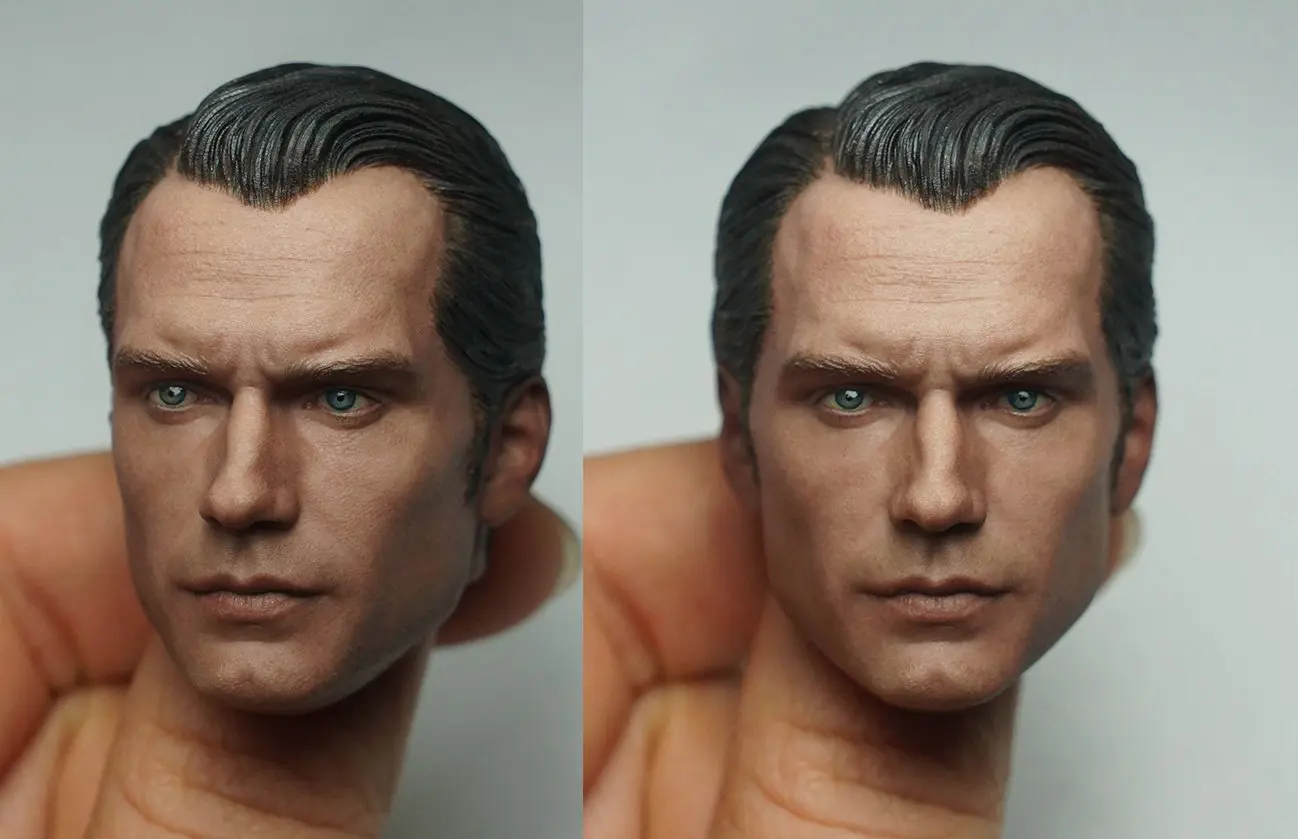
The artists from Modern Life Workshop create hyper-realistic sculptures with ZBrush and 3D printing.
In gaming, online communities have sprung up around tabletop games like Dungeons & Dragons, for which gamers use 3D printers to create one-of-a-kind D&D 3D printed miniatures, figurines, terrains, landscapes, and other board game accessories.
Professional model-making companies, like DM-Toys, also use 3D printing to accelerate prototyping and production cycles of custom models.
Global play and entertainment company Hasbro used the technology to create Hasbro Selfie Series figures — a groundbreaking endeavor to use 3D printing to manufacture personalized action figures at scale. For the Selfie Series, fans could scan their face with a smart device and have a custom-made look-a-like action figure delivered to their door.
Medical Models and Prosthetics
In healthcare, radiologists, surgeons, and biomedical professionals are increasingly turning to 3D printing to create accurate 3D models of anatomical features that can be used as reference tools for preoperative planning, intraoperative visualization, and education.
3D printing empowers medical professionals to create complex models with intricate details that would be impossible to produce with other technologies.

A fully colored pancreas model that was produced with SLA 3D printing and then painted with acrylic.
Highly detailed color models are excellent in resident education programs, where each blood vessel or organ can be directly 3D printed or painted in different colors for easy classroom viewing.
Furthermore, patient-specific surgical models that are based on patient scan data are becoming increasingly useful tools in today’s practice of personalized, precision medicine.
3D printing has made it possible to 3D print custom prosthetics designed for patient comfort. After printing, prosthetics are painted to match patients, either using biocompatible paints or painted and then covered with a biocompatible sealant to make the resulting prosthetic wearable.
Dr. Travis Bellicchi 3D printed a prosthetic jaw for cancer survivor Shirley Anderson with a process named after the patients: the Shirley Technique. On the other side of the world, doctors in Singapore created a prosthetic nose for skin cancer survivor J.F. Lian, painting multiple 3D prints in order to match Lian’s skin tone.
Bringing Color to 3D Printing
From directly printing in custom colors or multiple colors to dyeing, painting, and hydrography, it’s possible to deliver color 3D printed parts in a range of mechanical properties.
Resin 3D printers offer smooth surfaces for painting or hydrography, or, with Formlabs resin 3D printers, direct printing in custom colors. Meanwhile, SLS parts can be dyed — from full, uniform color to ombrés and effects.
Explore Formlabs printers to start printing or contact sales to learn more.


